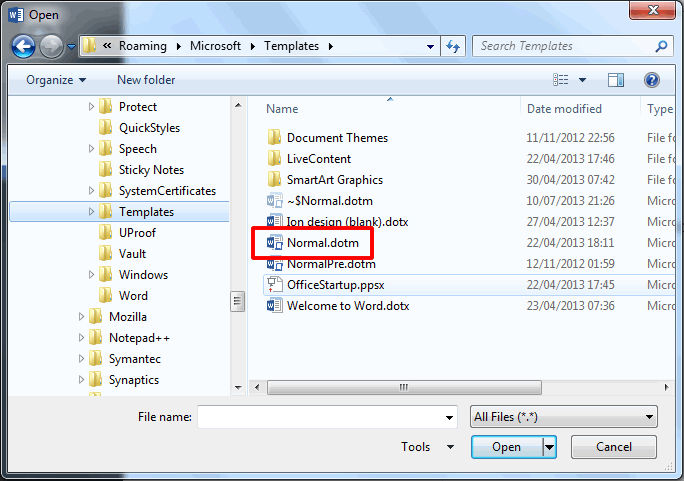You can change the default settings for new documents by making changes to the Normal template that new documents are based on. You can modify the Normal template to change its default formatting or content so that any new document that you create will use the new settings. Change the default font. Open the template or a document based on the template whose default settings you want to change. On the Format menu, click Font, and then click the Font tab. Make any changes that you want, and then click Default. Note: Most of the styles in Word are based on the Normal.
Use Disk Utility to wipe your startup and any other internal hard disks. Select your drive name from the sidebar and click Erase. In the format menu, choose Mac OS Extended (unless you are using High Sierra), and above, select APFS, type a new name for your disk (we recommend that you leave the default - Macintosh HD) and click Erase. 2 days ago Even though an option is available in the Zoom settings, Zoom admin has locked it. 11 Best Microsoft Word Templates to Create Brochure Top 7 Fixes for an App Default Was Reset. How to Restore the Default Settings in Microsoft PowerPoint Date: 2019-10-2 Author: Olivia You might change several settings in MS PowerPoint for some special situations, but when you want to remove the specific configuration, it doesn’t work and will affect what you do next, or even you cannot create a new presentation smoothly. Nov 25, 2015 How reset Microsoft office word 2016 to default setting go to start type in Regedit go to the following folder HKEYCURRENTUSER SOFTWARE Microsoft Office 16.0 Word delete the word folder, Done.
-->Note
Office 365 ProPlus is being renamed to Microsoft 365 Apps for enterprise. For more information about this change, read this blog post.
Symptoms

When you start Microsoft Word for Mac, the vertical and horizontal scroll bars are not displayed on the screen.
Cause
This behavior can occur if the Horizontal scroll bar and Vertical scroll bar check boxes under Preferences are not selected. This behavior can also occur if your Word preferences or the Normal template is corrupted.

Note
In full-screen mode, there are no horizontal or vertical scroll bars. Press ESC on your keyboard to exit full-screen mode.
Resolution
To resolve this issue, make sure that the scroll bars in both Word and the Apple iOS System Preferences are both on. To do this, follow these steps:
Step 1: Adjust the preferences
- Select the Apple menu.
- Select System Preferences.
- Select General.
- Set the 'Show scroll bars' option to Always.
Step 2: Adjust the Word preferences

- Start Word.
- On the Word menu, select Preferences.
- Open View.
- Select the Horizontal scroll bar and the Vertical scroll bar check boxes in the 'Show Window Elements' section.
- Close the View dialog bo.
Change Microsoft Word Default Settings
Restore the preferences and Normal template to the default settings
If the issue still occurs, try to restore the preferences and Normal template to the default settings. To do this, follow these steps:
Microsoft Word 2013 Default Settings
Quit all applications.
On the Go menu, select Home.
Open Library.
Note
The Library folder is hidden in MAC OS X Lion. To display this folder, hold down the OPTION key while you select the Go menu.
Open the Preferences folder.
Look for a file that is named com.microsoft.Word.plist.
If you locate the file, move it to the desktop. If you cannot locate the file, the application is using the default preferences.
If you locate the file and move it to the desktop, start Word, and then check whether the problem still occurs. If the problem still occurs, quit Word, and restore the file to its original location. Then, go to the next step. If the problem is resolved, you can move the com.microsoft.Word.plist file to the trash.
Quit all Microsoft Office for Mac applications.
On the Go menu, select Home.
Open Library.
Note
The Library folder is hidden in MAC OS X Lion. To display this folder, hold down the OPTION key while you select the Go menu.
Open the Preferences folder.
Open the Microsoft folder.
Locate the file that is named com.microsoft.Word.prefs.plist.
Move the file to the desktop.
Start Word, and then check whether the problem still occurs. If the problem still occurs, quit Word, and then restore the file to its original location. Then, go to the next step. If the problem is resolved, you can move the com.microsoft.Word.prefs.plist file to the trash.
On the Go menu, select Home.
Open Library.
Note
The Library folder is hidden in MAC OS X Lion. To display this folder, hold down the OPTION key while you select the Go menu.
Open the Application Support folder.
Open the Microsoft folder.
Open the Office folder.
Open the User Templates folder.
Locate the file that is named Normal, and move the file to the desktop.
Start Word, and then check whether the problem still occurs. If the problem is resolved, you can move the Normal file to the trash.